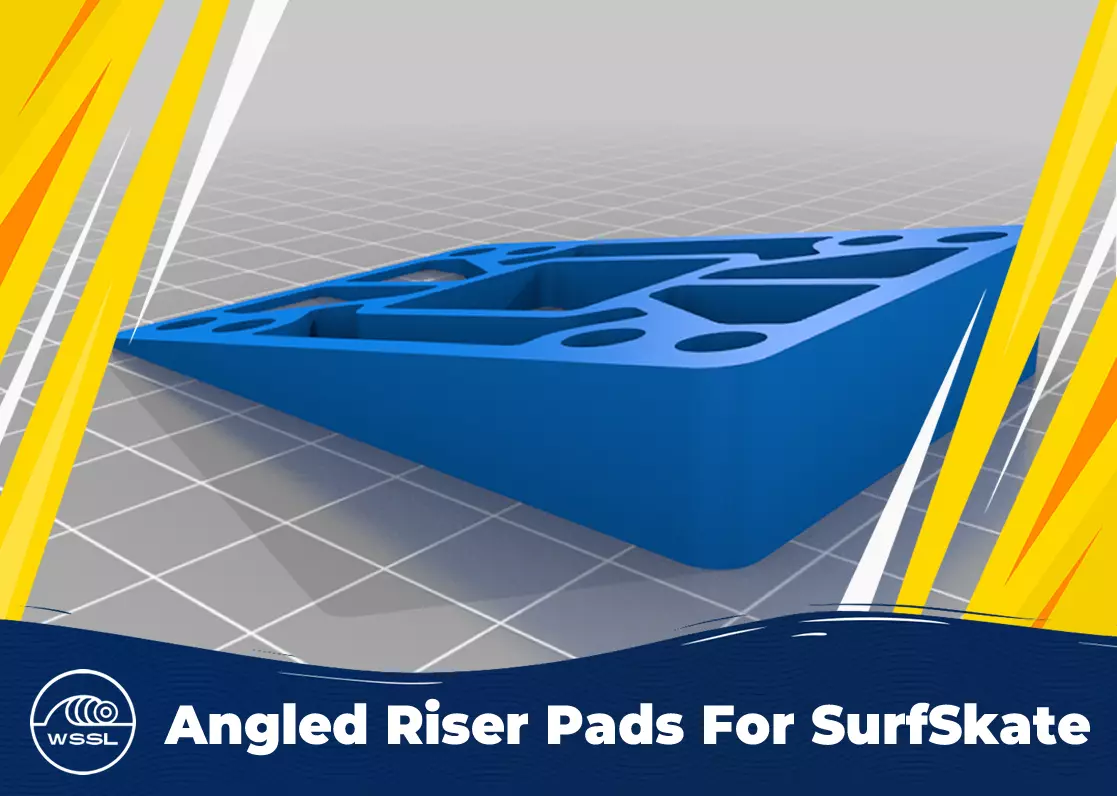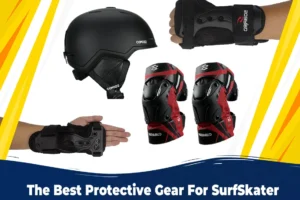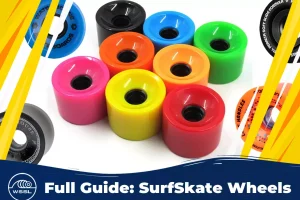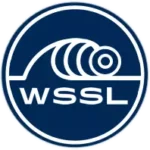
Angled Riser Pads For SurfSkate
- Categories Reviews
- Date August 10, 2024
Angled Riser Pads For SurfSkate
Angled Riser Pads, also known as truck wedges, are components inserted between the truck and the deck with the purpose of raising the height of the surfskate.
In this case, being angled, they allow athletes to adjust some important settings of the surfskate. Find out which ones!
What do angled risers accomplish?
The angled risers will change the diagonal rotation angle of your trucks. This will affect how your trucks turn and lean.
The wedge will make your setup more challenging; conversely, the dewedging will provide more stability.
How should angled riser pads be oriented?
If you wish to introduce more turns, position the wider part facing inward towards the deck.
If you want to introduce more stability, position the wider part facing outward away from the deck.

For instance, when someone mentions a truck with 50°, 45°, 43°, they are referring to the angle at which the hanger meets the baseplate.
Baseplate angles can be adjusted using angled risers, commonly referred to as wedges and dewedging.
Wedging increases the baseplate angle, and dewedging decreases it.
Wedging adds more responsiveness because it increases the baseplate angle, allowing the truck’s pivot to turn more freely.
Dewedging, on the other hand, reduces the baseplate angle, resulting in more stability, as it reduces the truck’s pivot’s ability to turn.
Do you know what the difference is between turning and leaning?

Lean vs Turn
Imagine you’re surfing and you want to make a tight turn. What do you need to do?
Most likely, shift your body weight to one side of your foot, toes, or heels.
In other words, you need to lean towards the edge of your surfskate.
Lean: Refers to the moment when the deck of the board moves toward the ground.
Turning: occurs when you lean. The weight transfer creates pressure, which, in turn, causes the truck’s support to pivot.
Usually, lower-degree trucks are used at higher speeds, for example, downhill skateboarding. Therefore, this setup provides more lean and less turn. That is, you will be LESS susceptible to imbalance at high speeds!
Conversely, a higher baseplate angle results in more turn and less lean, ideal for surfskate carving. That is, you will be MORE susceptible to imbalance at high speeds!
DO YOU WANT TO JOIN THE WSSL?
Join our WhatsApp group to receive special tips about SurfSkate for free.
Common Sets
Below are common ways to use angled riser pads.
- Front Wedge
- Wedge & Dewedge
- Double Wedge
Front Wedge

When you simply direct the thicker end of the angled riser pad at the front base towards the center of the board, it will provide the surfsimulator with more capability for making turns.
Wedge & Dewedge

When the front base of the surfsimulator has the thicker part of the angled riser pads facing towards the center of the board, and at the rear base, the thicker part of the angled riser pads is facing towards the tail, you will be increasing the rotation capability at the front and reducing it at the back.
Double Wedge

When you place both of the wider parts of the angled riser pads towards the center of the deck, you’ll have better maneuverability for making turns, but it will make the surfsimulator unstable when subjected to high speeds.
My Considerations
There are numerous possibilities for you to enhance the performance of your surfsimulator by using baseplate angles to manipulate truck geometry in combination with other components.
Indeed, this seems to be a complex and relatively niche topic, primarily utilized by a few professional athletes. My main goal is to share advanced insights so that you can essentially understand how to modify the standards imposed by surfskate manufacturers.
Tag:review, riser pads, setup, surfskate
Rafael Azevêdo pioneered SurfSkate and developed this new authentic modality in 2014 through hosting championships and social events in Brazil.
He built the legend StreetStyle SurfSkate Park and established the key criteria through WSSL to globally regulate the new surfskate modality.
Full-stack professional in Marketing and Technology, SurfSkate Coach, Content Producer, and CEO of the World SurfSkate League.
You may also like

The Best Protective Gear for SurfSkater

Full Guide: Wheels for Surfskate



